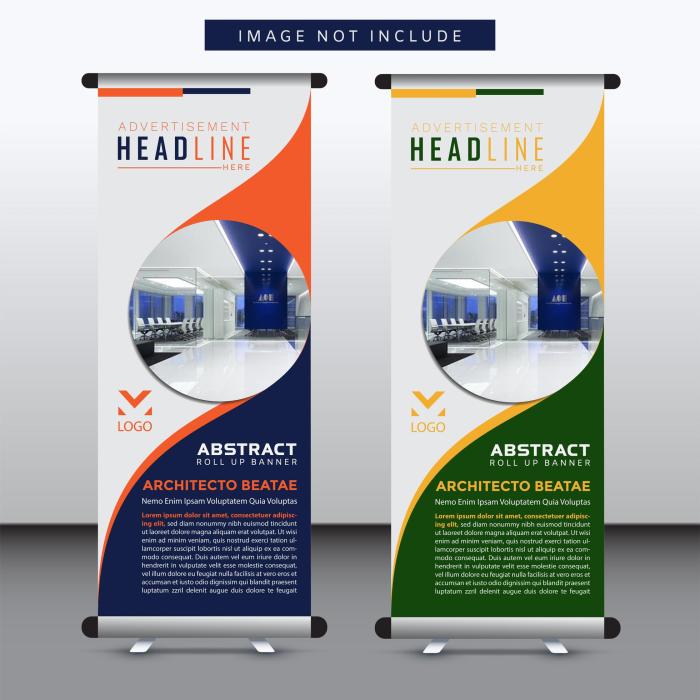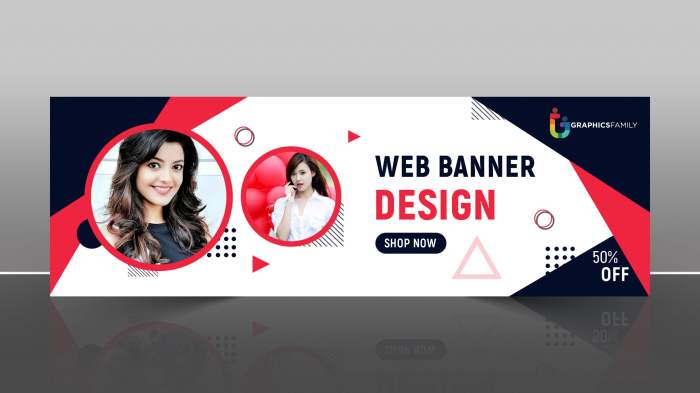Crafting Compelling Banner Designs: A Comprehensive Guide
In the realm of marketing, the power of banner design cannot be understated. From capturing attention to driving brand recognition, the art of creating visually stunning banners plays a pivotal role in any successful advertising campaign. Dive into this guide to discover the key elements, tools, and best practices that can elevate your banner designs to new heights.
Importance of Banner Design

Effective banner design plays a crucial role in the success of marketing campaigns by capturing the attention of the target audience and conveying key messages in a visually appealing way.
Enhancing Brand Awareness
Well-designed banners have the power to significantly impact brand awareness and recognition. For example, the iconic "Just Do It" campaign by Nike featured bold and simple banner designs that not only attracted attention but also reinforced the brand's message across various platforms.
Engagement with Target Audience
Engaging banner designs can create a connection with the target audience, leading to increased interaction and conversions. A study by Google found that animated banners with interactive elements resulted in higher engagement rates compared to static banners.
Elements of Effective Banner Design

When it comes to creating a visually appealing banner design, several key elements play a crucial role in capturing the audience's attention and conveying the intended message effectively. From color schemes to typography and imagery, each element contributes to the overall impact of the banner design.Color schemes are essential in setting the tone and mood of the banner.
The right combination of colors can evoke emotions, create contrast, and ensure readability. A harmonious color palette can make the design visually pleasing and help highlight important information.Typography is another crucial element that can make or break a banner design.
The choice of fonts, sizes, and styles can enhance the readability of the text and convey the brand's personality. It is important to strike a balance between creativity and legibility when selecting typography for a banner.Imagery plays a significant role in capturing the audience's attention and communicating the message effectively.
High-quality images or graphics can make the design more engaging and memorable. It is essential to choose visuals that are relevant to the content and resonate with the target audience.The size and placement of elements in a banner layout are equally important.
A well-balanced composition ensures that the design is visually appealing and easy to comprehend. Strategic placement of text, images, and other design elements can guide the viewer's eye and emphasize key messages.In conclusion, a successful banner design incorporates a harmonious color scheme, effective typography, engaging imagery, and thoughtful layout.
By paying attention to these key elements, designers can create banners that stand out and effectively communicate the intended message to the audience.
Tools and Software for Creating Banners
Creating visually appealing banners requires the right tools and software to bring your design ideas to life. Let's explore some popular options and tips for choosing the right one based on your design needs and skill level.
Popular Tools for Banner Design
When it comes to designing banners, there are several software options available that cater to different skill levels and design preferences. Some popular tools include:
- Adobe Photoshop: Known for its versatility and powerful design capabilities, Photoshop is a go-to choice for many designers. It offers a wide range of tools and features for creating stunning banners.
- Canva: A user-friendly platform perfect for beginners, Canva provides pre-designed templates and drag-and-drop functionality, making it easy to create professional-looking banners.
- GIMP: An open-source alternative to Photoshop, GIMP offers advanced editing tools and customization options for designing unique banners.
- Adobe Illustrator: Ideal for creating vector-based designs, Illustrator is great for designing logos and intricate banner graphics.
Tips for Choosing the Right Tool
When selecting a tool for banner design, consider the following factors to ensure you choose the right one for your needs:
- Skill Level: Choose a tool that matches your skill level, whether you're a beginner or an experienced designer.
- Features: Look for software that offers the features you need to bring your design ideas to life, such as image editing tools, text effects, and layering options.
- Compatibility: Ensure the software is compatible with your operating system and can export files in the necessary formats for your banner.
- Cost: Consider your budget and whether the software offers a free trial or subscription-based pricing.
Best Practices for Designing Banners
When it comes to designing banners, there are some best practices that can help you create effective and eye-catching designs. From simplicity and clarity to optimizing for various platforms, these practices can make a significant difference in the impact of your banners.
Importance of Simplicity and Clarity
One of the key aspects of designing banners is to keep them simple and clear. Avoid cluttering the design with too much text or graphics, as this can overwhelm viewers and make it difficult to convey your message. A clean and minimalistic approach can help ensure that your banner is visually appealing and easy to understand at a glance.
Concept of Hierarchy in Banner Elements
Understanding hierarchy in banner design is crucial for guiding the viewer's attention and emphasizing key information. By using different sizes, colors, and positions for elements such as text, images, and buttons, you can create a visual hierarchy that leads the viewer through the content in a logical and engaging way.
Tips for Optimizing Banner Designs
Optimizing banner designs for various platforms and devices is essential to ensure that your message reaches the intended audience effectively. Consider factors such as responsive design, loading times, and screen sizes when creating banners for websites, social media, or mobile apps.
Testing your designs on different devices and platforms can help identify any issues and ensure a seamless user experience.
Epilogue

As we conclude our exploration of banner design, remember that the key to creating impactful banners lies in striking a balance between creativity and strategy. By incorporating the right elements and following best practices, you can craft banners that not only captivate your audience but also drive results for your marketing efforts.
Question Bank
How important is banner design for marketing campaigns?
Banner design is crucial for marketing campaigns as it serves as the visual representation of a brand or product, capturing the audience's attention and conveying key messages effectively.
What are the key elements of effective banner design?
Key elements include color schemes, typography, imagery, size, and placement, all of which contribute to making a banner visually appealing and engaging.
Which tools are commonly used for creating banners?
Popular tools for designing banners include Canva, Adobe Photoshop, and Bannersnack, each offering unique features to help users create stunning banner designs.
How can banner designs be optimized for different platforms?
Optimizing banner designs involves ensuring they are responsive and compatible across various devices, as well as considering platform-specific requirements for effective display.




